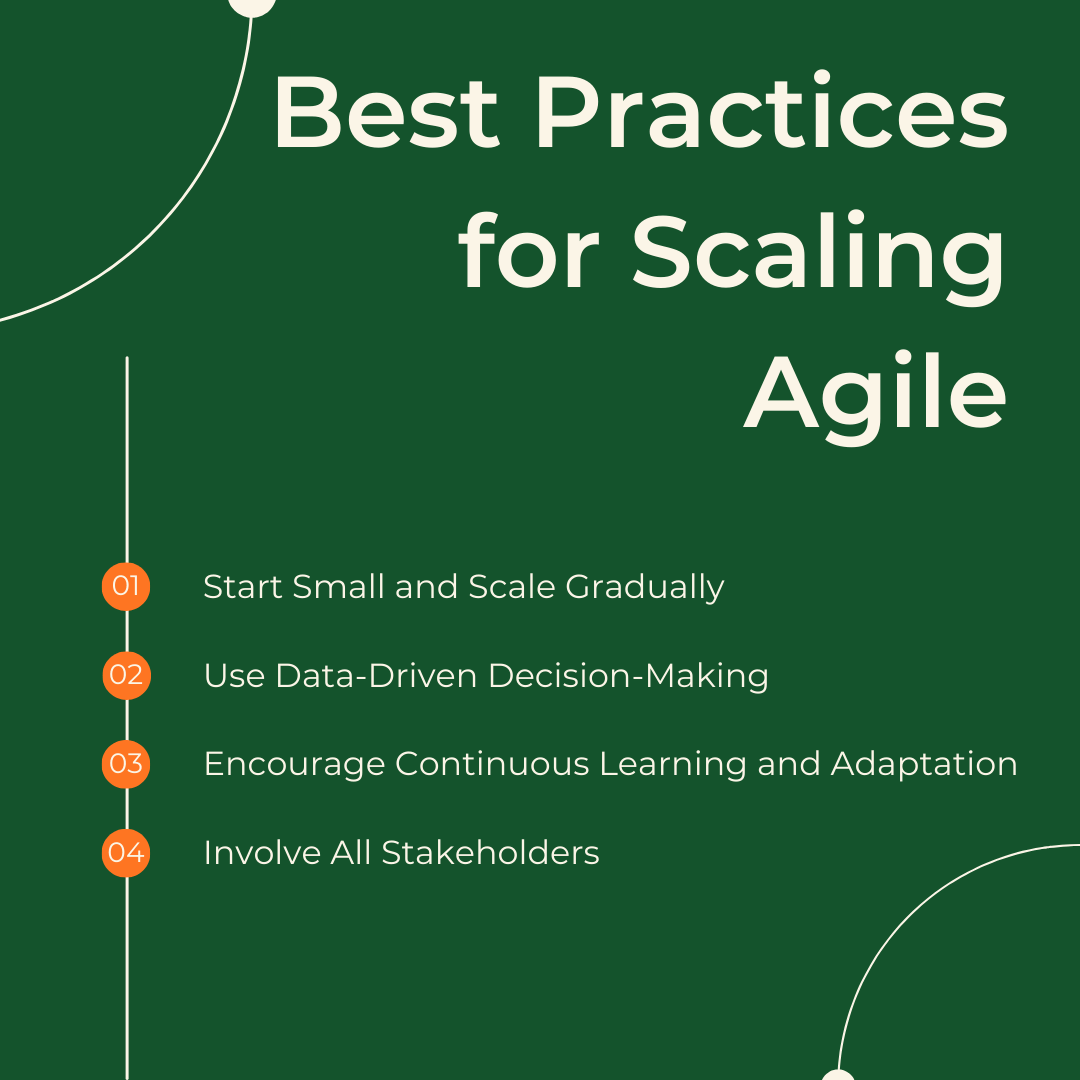Introduction
Scaling Agile can seem like the natural next step for growing organizations, but it's often misunderstood. Misconceptions, like assuming bigger teams mean faster results, can derail your Agile transformation. These myths create frustration, wasted resources, and stalled progress.
To successfully scale Agile, you need to recognize and address these common pitfalls. Understanding the truth behind these misconceptions is key to achieving the flexibility and efficiency Agile promises, even at scale.
Common Misconceptions About Scaling Agile
Scaling Agile is often misunderstood, leading to several common misconceptions that can hinder progress.
Misconception 1: Scaling Agile Means Doing Everything Bigger and Faster Many believe that scaling Agile is simply about expanding existing processes. However, scaling requires refinement, not just amplification, ensuring focus and alignment rather than speed.
Misconception 2: Adding More People Automatically Increases Productivity It’s tempting to think more hands mean quicker results, but rapidly increasing team size can lead to coordination issues, reducing overall efficiency.
Misconception 3: One-Size-Fits-All Solutions Work Organizations often adopt a single framework, expecting it to work universally. Agile must be adapted to align with the unique context and requirements of each organization.
Misconception 4: The Need for a Perfect Strategy Before Scaling The belief that you must have a flawless plan before scaling is flawed. Agile thrives on flexibility and iterative improvements, making adaptability more crucial than an initial perfect strategy.
Misconception 5: There’s a Right Way to Scale Agile Some assume there’s a definitive method for scaling Agile. However, every organization is different, and experimentation is key to finding what works best in each unique environment.
Different approaches to scaling Agile
When scaling Agile, selecting the right framework is crucial for success. Several popular frameworks offer different approaches:
SAFe (Scaled Agile Framework): Known for its comprehensive structure, SAFe provides a well-defined approach, making it ideal for large organizations but may feel rigid for smaller teams.
LeSS (Large Scale Scrum): LeSS focuses on simplicity, aiming to keep Scrum practices consistent across all teams. It is highly effective for organizations that value transparency and collaboration.
Nexus: Built on Scrum, Nexus adds layers to manage interdependencies between teams. It’s particularly effective for organizations with complex projects involving multiple teams.
Scrum@Scale: This framework allows for maximum flexibility, enabling organizations to scale Scrum practices at their own pace. It’s ideal for organizations that need to maintain agility while growing.
Each framework has its pros and cons, and the choice depends on your organization’s specific needs. Understanding these frameworks allows you to tailor Agile practices, ensuring that scaling enhances, rather than hinders, your Agile journey.
Challenges in Scaling Agile
Scaling Agile presents several challenges that organizations must navigate to achieve success.
Organizational Resistance and Culture: Many teams struggle with entrenched mindsets and resistance to change, making it difficult to adopt Agile principles across larger structures.
Managing Complexity While Maintaining Simplicity: As teams scale, projects become more complex, which can lead to a loss of the simplicity and agility that made smaller teams successful.
Balancing Flexibility with Structure: Striking the right balance between Agile’s inherent flexibility and the need for consistent processes becomes harder as organizations grow.
Best Practices for Scaling Agile
Successfully scaling Agile requires a strategic approach built on best practices:
Start Small and Scale Gradually: Begin with a pilot program, refine your processes, and expand slowly to avoid overwhelming your teams.
Use Data-Driven Decision-Making: Leverage metrics to guide your scaling efforts, ensuring that decisions are based on real insights rather than assumptions.
Encourage Continuous Learning and Adaptation: Promote a culture of ongoing learning where teams continuously improve and adapt to new challenges.
Involve All Stakeholders: Ensure everyone, from leadership to team members, is engaged and aligned with the scaling strategy, fostering collaboration and commitment.

Case Studies
Examining real-world examples can provide valuable insights into scaling Agile effectively.
Success Stories: Companies like Spotify and ING have successfully scaled Agile, leveraging tailored frameworks and continuous improvement. Spotify, for instance, developed its unique “Squad” model, allowing teams to remain autonomous while scaling efficiently. ING transformed its entire organization by embracing Agile principles, leading to faster innovation and improved customer experiences.
Lessons from Failures: Not all attempts at scaling Agile succeed. Some organizations, such as Nokia, struggled due to rigid implementations and lack of cultural alignment, highlighting the importance of flexibility and adaptability.
Key Takeaways
- Scaling Agile requires refinement, not just bigger teams or faster processes.
- Steer clear of one-size-fits-all approaches; customize Agile practices to suit your organization’s unique requirements.
- Flexibility and continuous improvement are crucial for successful scaling.
- Engage all stakeholders and ensure alignment across the organization.
- Analyzing both successes and failures in case studies offers valuable lessons.
Conclusion
Scaling Agile is a complex but rewarding process that requires more than just increasing the size of your teams or hastily implementing a framework. It requires thorough planning, adaptability, and a clear understanding of your organization’s specific needs.
By addressing common misconceptions, selecting the right scaling framework, and adhering to best practices, you can successfully expand Agile without losing the agility that drives success. Learning from both the successes and failures of others can provide valuable insights, guiding your organization toward a more effective and sustainable Agile transformation.

